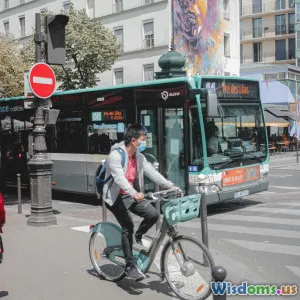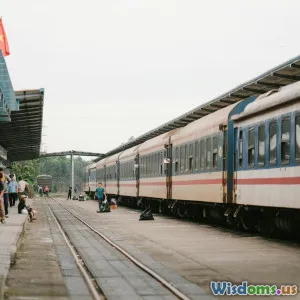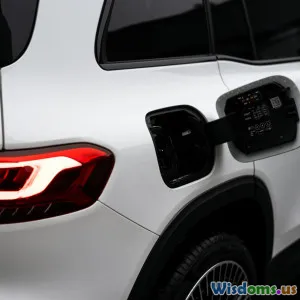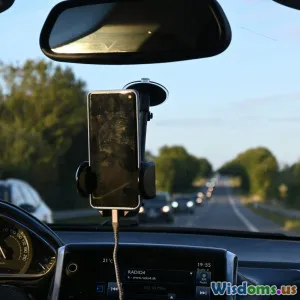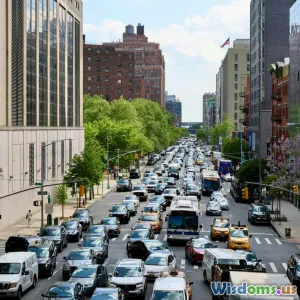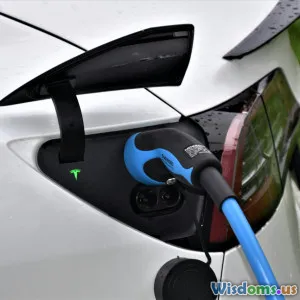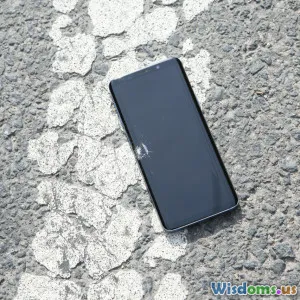
How Smart Sensors Are Preventing Road Accidents in Urban Areas
7 min read Explore how smart sensors are revolutionizing urban road safety and reducing accidents effectively. (0 Reviews)
How Smart Sensors Are Preventing Road Accidents in Urban Areas
Urban roads are bustling, complex environments, where the risk of accidents is high due to congestion, pedestrians, and unpredictable traffic patterns. But a technological revolution is underway—smart sensors are being integrated into vehicles and infrastructure, transforming the way cities approach road safety. This article explores how these intelligent devices detect hazards, communicate vital information, and act as silent guardians, reducing accidents and saving lives.
The Growing Need for Smart Road Safety Solutions
Urban areas face particular challenges contributing to road accidents. According to the World Health Organization, over 1.3 million people die annually worldwide from road crashes; a significant portion of these occur in cities. Factors such as jaywalking pedestrians, cyclists, erratic driver behavior, and complex intersections heighten risk.
Traditional traffic management systems rely heavily on static signs and human judgment. However, these have limitations when it comes to real-time detection of dynamic hazards. Smart sensors bridge this gap by offering real-time data combined with automated responses, enhancing both driver awareness and decision-making.
Types of Smart Sensors Revolutionizing Urban Roads
1. LiDAR and Radar Sensors
These sensors use laser and radio waves to create detailed 3D maps of the environment around a vehicle or intersection. LiDAR (Light Detection and Ranging) allows detection of obstacles—including pedestrians and cyclists—even in poor lighting or weather conditions.
For example, automotive manufacturers like Tesla and Waymo extensively incorporate LiDAR and radar for their autonomous driving technologies, enhancing obstacle detection and collision avoidance.
2. Infrared and Ultrasonic Sensors
Infrared sensors track heat signatures, useful for detecting pedestrians and animals during nighttime. Ultrasonic sensors measure distances to nearby objects, ideal for parking assistance and low-speed scenarios.
3. Smart Intersection Sensors
Embedded into road infrastructure, these sensors monitor traffic flow, vehicle speeds, and signal adherence. Cities like Singapore use these systems to dynamically adjust signal timings based on real-time traffic conditions, reducing congestion-related accidents.
4. Vehicle-to-Everything (V2X) Communication Sensors
These sensors enable direct communication between vehicles and infrastructure, alerting drivers or autonomous systems about upcoming hazards, traffic jams, or emergency vehicles approaching.
How Smart Sensors Actively Prevent Accidents
Real-Time Hazard Detection and Alerts
Smart sensors provide instantaneous alerts to drivers, warning about nearby pedestrians, sudden braking of vehicles ahead, or hazardous road conditions such as ice or debris. Volvo's City Safety system uses such sensors to apply automatic emergency braking if a collision is imminent, reportedly reducing rear-end crashes by up to 28%.
Adaptive Traffic Management
By collecting and analyzing traffic patterns, urban traffic control centers can optimize signal timings, reduce traffic bottlenecks, and minimize risky driver behavior such as over-speeding or red-light running. Barcelona's Intelligent Transportation System employs sensor-driven adaptive signaling that cut traffic delays by 20% and improved road safety.
Enhancing Autonomous and Assisted Driving
Smart sensors form the backbone of driver assistance systems like Adaptive Cruise Control (ACC), Lane Keep Assist (LKA), and Blind Spot Detection. These technologies help drivers maintain safe distances, stay centered in lanes, and avoid unseen vehicles — altogether lowering accident risks.
Pedestrian and Cyclist Protection
Sensors mounted along sidewalks, crosswalks, and vehicles detect vulnerable road users. Tokyo’s smart crosswalk system, for example, uses motion sensors to extend traffic light times for elderly or slower pedestrians, drastically improving crossing safety.
Real-World Impact and Success Stories
In California’s Metropolitan Bay Area, integrating V2X communication with smart sensors reduced intersection collisions by 25% over two years. Similarly, cities like Amsterdam have implemented sensor-based bike-lane monitoring systems that provide real-time alerts, decreasing bike accidents by over 15%.
Furthermore, data analytics from sensor networks allow city planners to identify accident hotspots and deploy targeted interventions such as improved signage, road redesigns, or increased enforcement.
Challenges and Future Prospects
Despite notable gains, implementing smart sensor systems faces challenges including high infrastructure costs, data privacy concerns, and the need for standardization across jurisdictions.
Looking ahead, the rise of 5G networks promises faster, more reliable sensor communication. Combined with AI-driven predictive analytics, future smart sensor systems could anticipate accidents before they begin, providing an automated safety net for all road users.
Conclusion
Smart sensors are at the forefront of revolutionizing urban road safety. By enabling real-time hazard detection, improving traffic management, and supporting autonomous driving technologies, they are significantly reducing road accidents and saving lives. As cities continue to embrace these innovations, the dream of safer, smarter urban mobility moves closer to reality.
The fusion of sensor technology and urban infrastructure heralds a future where accidents are no longer inevitable—but preventable. Understanding and supporting this technological shift is essential for policymakers, urban planners, and citizens eager to create safer roads for all.
Rate the Post
User Reviews
Popular Posts












